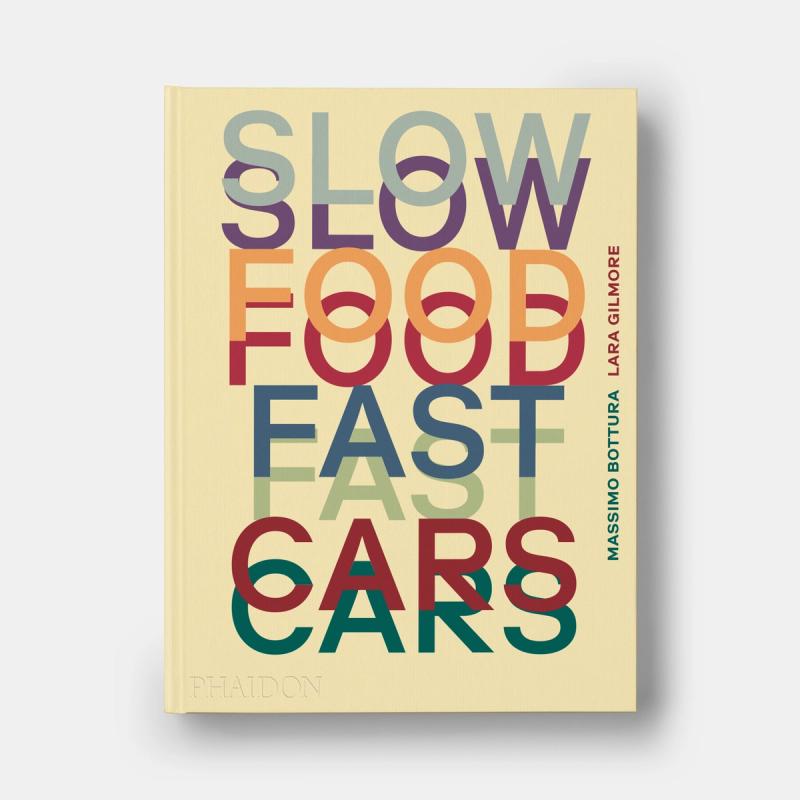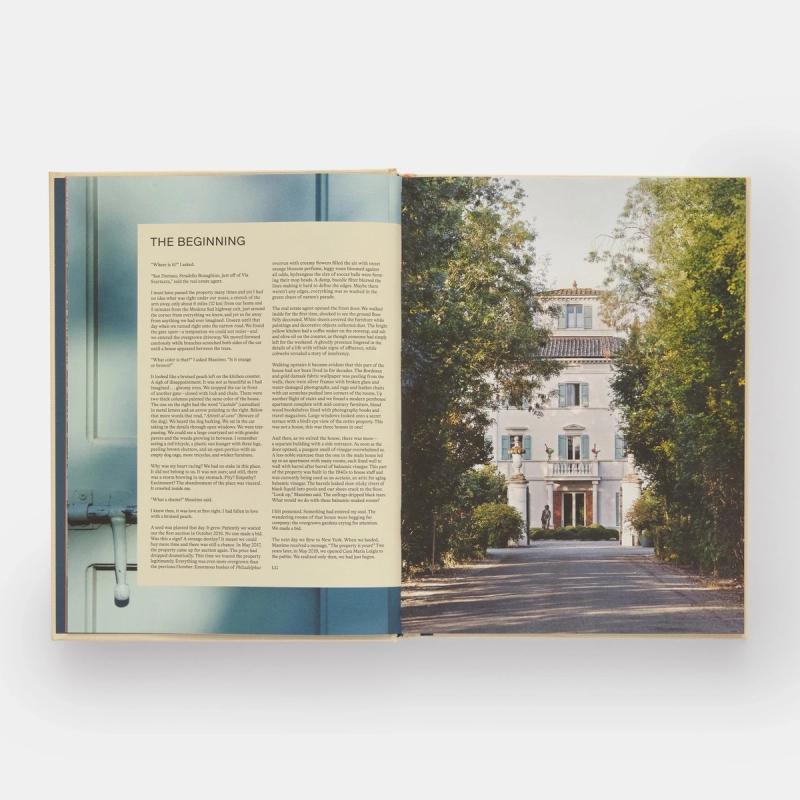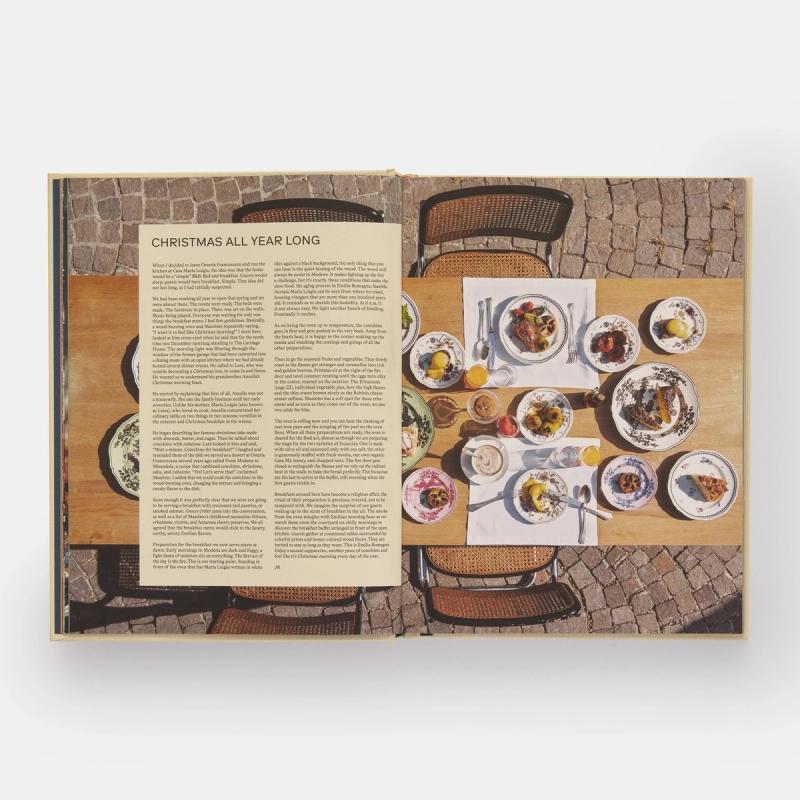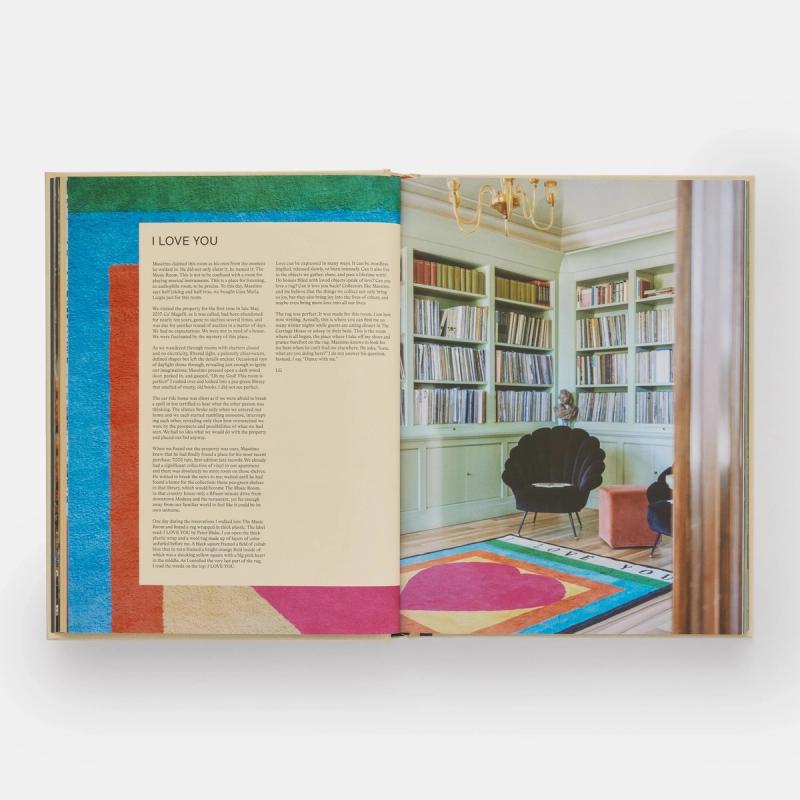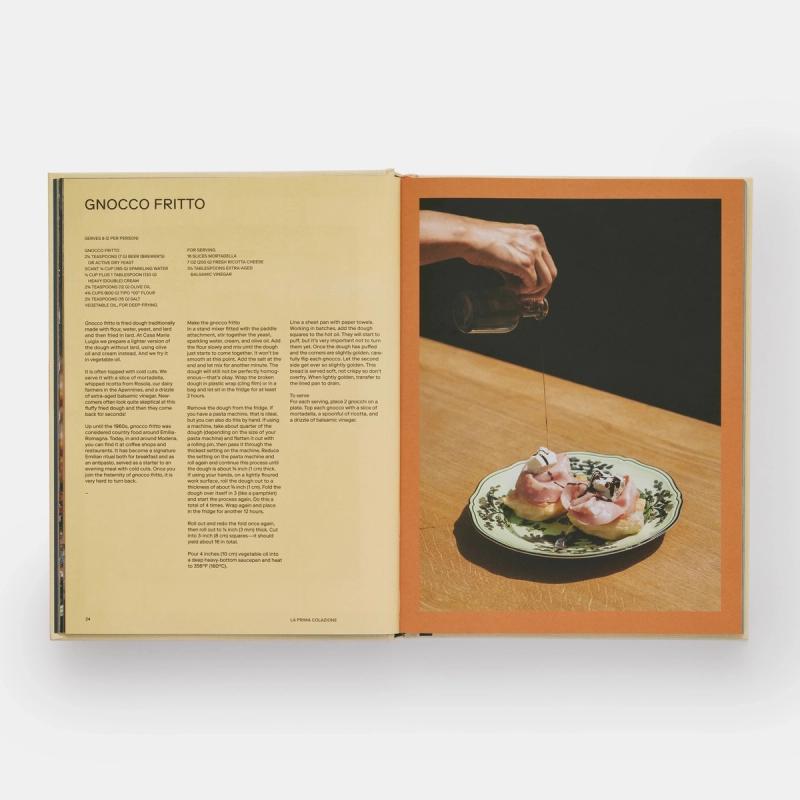
Lara Gilmore on the Media That Brings Out Her Inner Child
Lara Gilmore lives by the Italian adage festina lente, or, “make haste slowly.” “I interpret it as: Do things, and don’t stop doing them; keep moving forward,” she says. “But try to do them thoroughly and do them right. And along the way, try to enjoy the journey.”
As a restaurateur and the co-owner (with her husband, the chef Massimo Bottura) of the three-Michelin-starred restaurant Osteria Francescana in Modena, Italy—named the number one restaurant in the world by The World’s 50 Best Restaurants in both 2016 and 2018—its sister restaurant, the more casual bistro Franceschetta, and Ferrari’s Ristorante Cavallino in Maranello, as well as the co-founder of the nonprofit Food for Soul and the social start-up Tortellante, it’s a fitting modus operandi.
Living in the quaint city of Modena is advantageous for achieving this lifestyle, Gilmore says. “It’s a small town, small enough that I can do a million things in one day.” On the day of our interview alone—which took place at 4:00 p.m. Italy time—Gilmore told me that she had already worked with the Osteria Francescana team on putting up their annual Christmas tree; drove her son, Charlie, to a doctor’s appointment; visited the new shop they’ve opened for Tortellante and put up Christmas decorations there; gone back to Francescana to check on the tree; visited Casa Maria Luigia to finish decorating there; went back to Tortellante to meet someone for lunch; then over to Franceschetta for a burger; then home for this interview. “I do a lot of running around, but it’s kind of like checking on all my children,” Gilmore says. “I’m like the mother hen.”
This festina lente outlook is also encapsulated by the title of her and Bottura’s latest book, Slow Food, Fast Cars (Phaidon), a recipe-slash-interiors book that aims to capture the sensory and culinary experience of staying at their guest house, Casa Maria Luigia. The volume collates 85 recipes for breakfasts, brunches, and snacks, including frittatas, focaccias, pastries, and preserves, with personal essays and photographic spreads of the house’s interior design, cars, and countryside landscape.
Here, we speak with Gilmore about the media she turns to to stay informed, find escape, and embrace her inner child.
How do you start your mornings?
My days begin early. My son, Charlie, who lives with us, is also an early riser—he has made me an early riser, and I’m thankful for that. We’re up at probably around 6:30 in the morning. The first thing I do when I open my eyes is I count backwards from one hundred to one. I don’t remember who taught me this. It’s just a thing of mine. It’s a way of waking up and not jumping into a thought.
Most of the time, my wake-up call is not even an alarm. It’s Charlie coming in and saying, “Are you gonna make the coffee?” I get up, and I shuffle to the kitchen. The first action of the day for me is turning on the coffeemaker.
Before I turn on my New York Times or open the computer to headlines or what’s happening in the world, I open a book or my New Yorker magazines—I get both digital and physical subscriptions because I need both of them. I read digital, but with physical, you can fold it in, you can send it to somebody, you can keep an article that you love and you don’t have to send it by email—you can actually physically give it to them.
I love books, and so sometimes I’ll just scan a book. I’ll read a paragraph of Creativity, Inc. by Ed Catmull [and Amy Wallace]. Or I just got this book: Your Brain on Art. It’s kind of an academic book, but if I read a little bit at a time, it’s actually stimulating. I just love having the first media or words or somebody else’s thoughts I’m putting into me, I want them to be on paper and I want to feel them, and I want to read them and let them sink in, because it’s like this little poetry for your brain.
Then I get to the New York Times headlines. I try to be faithful about not only reading the stuff I want to read, but also the stuff I don’t want to read. It’s very hard for me, though. I tend to migrate toward the happy stories, toward the quirky stories. I migrate toward the “Why would you read that article?” article. Then I go to the “Okay, the world is a little bit messy and confusing, and what are we going to do now?” and doomsday.
I’m not a big television news watcher. I’m never turning on the TV in my house. I went to boarding school when I was 13 years old, and we didn’t have a TV. I went to a hippie college—never had a TV—so my relationship with television is so pathetic.
Where else do you get your news? Do you read any Italian news?
I go to the Financial Times for their weekend print and culture and arts, and also the Wall Street Journal, especially WSJ. Magazine. For my Italian news, I have a coffee bar across the street from my apartment, and there’s a coffee bar near Francescana, and they always have newspapers at Italian coffee bars. They buy the local newspaper, they buy the Modena Today newspaper, or the Gazzetta di Modena, and most of the time, they don’t even have the national newspaper—they just have the local paper. I love having a coffee and looking at the local paper, because I wouldn’t necessarily buy the local paper. But when you run into people, you want to know what’s going on—maybe someone got held up in some cigarette shop, or this polemic is going on, or they closed this road.
Any favorite newsletters?
I recently signed up for Axios. I’ve been getting it for just a week, and I’m really enjoying it. It’s a quick news thing, and they only choose, like, four subjects. I find that on the days when I’m really busy, I’ll read that, and then I’ll see if I’m going to read the rest.
There’s another newsletter from this group called MASS Design Group, and they are about sustainable design. They’re architects based in Boston, but they also have offices around the world. I just read one of their newsletters, and I found it amazing, the deep thoughts on the power of provenance—they were talking about materials in specific.
Any favorite podcasts?
When I’m driving from one place to another, and there’s no one else in my car, I am in love with my podcasts. For me, that is such a wonderful moment of escape into another world. I don’t want to really hear about politics on a podcast. If I’m cooking at home, I can listen to politics, but if I’m in the car, and I need that cocooning moment, I want to listen to Gone to Timbuktu, which is this beautiful podcast from Travel Writers UK, and [the host, Sophy Roberts] interviews authors and photographers and people who think about travel, and people who write about travel. She takes me to a pilgrimage, or she takes me to thinking about the Middle Ages and people walking at those times.
I also love Time Sensitive. I love to be in my car, isolated by myself, phone is off, and I’m listening to Time Sensitive on a two-hour drive somewhere. I can just totally zone out and focus on the words and go backwards forwards, find the passages that I want to listen to again. Design Emergency is another podcast I listen to a lot.
I just discovered How to Citizen with Baratunde Thurston, and I’m loving that podcast because I’m hearing all these voices that I would never run into in Modena; they’re not on my radar. I heard the most beautiful thing the other day from [the How to Citizen episode with] Ruha Benjamin, who teaches at Princeton. She just wrote this book called Race After Technology. On the podcast, she said—talking about her team, the people that she works with—“We have to be careful with each other, so we can be dangerous together.” I’m not one for too much self help, but when I hear something about how to work with people better, how to connect with people better, a message like that resonates so much with me, because my life is dependent on all these different groups of people that I work with to make my husband and our business and our ideas come to life. We can’t do it alone.
Any favorite magazines?
Well, I love The New Yorker. I don’t know if I could live without The New Yorker.
What book or books are you currently reading?
I’m usually reading three books at once, which isn’t the best way to read books, but it’s the only way that works for me. I’m finally reading Barbara Kingsolver’s Demon Copperhead, which is so good. I read Prodigal Summer, which is an older book of hers, but I wanted to read that first. Then I’m also reading this book by Dave Eggers, which is kind of supposed to be a children’s book. It’s called The Eyes and the Impossible. I got it in a bookstore this summer. It’s this really interesting story written in the voice of this wild dog, who lives in a park.
Then I just finished this book by Terry Tempest Williams called When Women Were Birds. She writes a lot about nature, and about her relationship to the land. This book is like a poem, so I’m reading it really slowly. I keep going back, because the passages are so beautiful. Then I was just in London, and the Tate has a big Philip Guston show. I think I first read this book about Philip Guston, I Paint What I Want to See, when I went to art school back in the nineties. I couldn’t remember where my copy was, so I have this brand-new copy, which I haven’t even begun yet.
You just made a cookbook. Do you ever use them in your own life?
I use cookbooks all the time, and I will never stop using cookbooks—even recipes that I know how to make. I always go back to the recipe. My first cookbook was the Moosewood Cookbook. I love that cookbook. It has this chocolate hazelnut cake that is the best. My pumpkin apple curry soup comes out of that cookbook. There are so many basic recipes I get out of that cookbook.
Here in Italy, I bought The Silver Spoon, Il cucchiaio d’argento, which is a really great cookbook. Easy to use. I learned so many Italian recipes out of that. Then I have clippings from The New York Times. Before we bought digital, my mother and my sister and I were literally cutting out recipes and either photocopying them, or just cutting it out of the newspaper and putting it in the mail and sending it to each other.
What’s one piece of media that you think everyone should consume?
Peter and the Wolf. I think that I listened to it recently; I listened to it on my phone, which is definitely not the way I listened to it the first time, which was on a record and then I had to turn over the record. But I think that Peter and the Wolf is a beautiful combination of a universal story about not crying wolf, which is something that still, today, I think about in terms of the moral of the story. I love the way it’s told through each instrument as an animal. There’s a really good version narrated by Sting.
Do you have any guilty pleasures?
My kids and I—especially when they were little and Massimo was always working in the restaurant—used to watch a lot of Disney movies together. I don’t feel guilty about it; it’s definitely something that bonds us. Charlie is now 23 and he has some special needs, so he’s still at home with us. My daughter is 27. She lives in Milan and comes home sometimes on the weekends, and we’ll put on a Disney movie. It could be Robin Hood, it could be Mulan—these are some of our favorites—it could be Pocahontas, it could be Fantasia. We’re so bonded together over those stories and the music.
